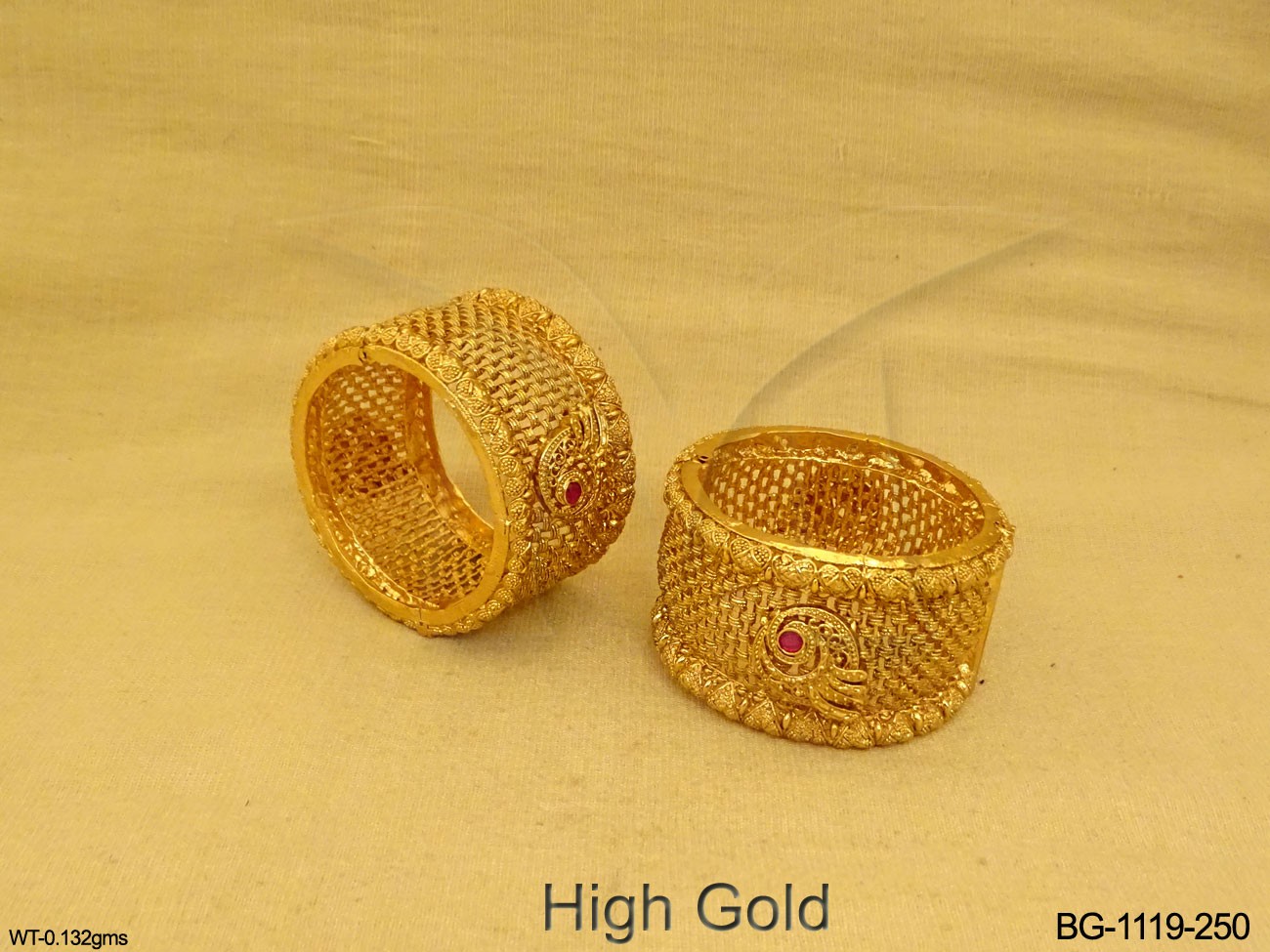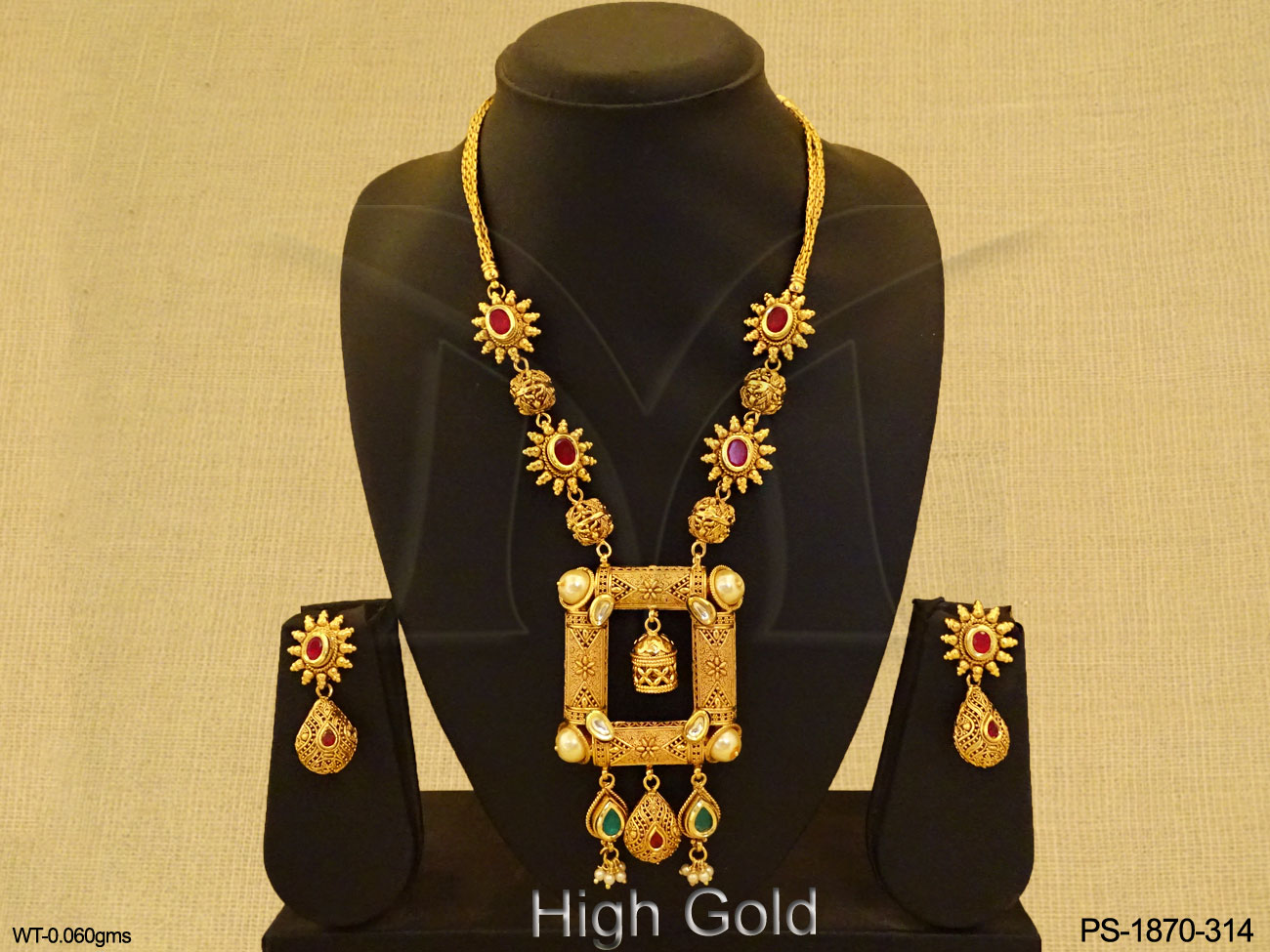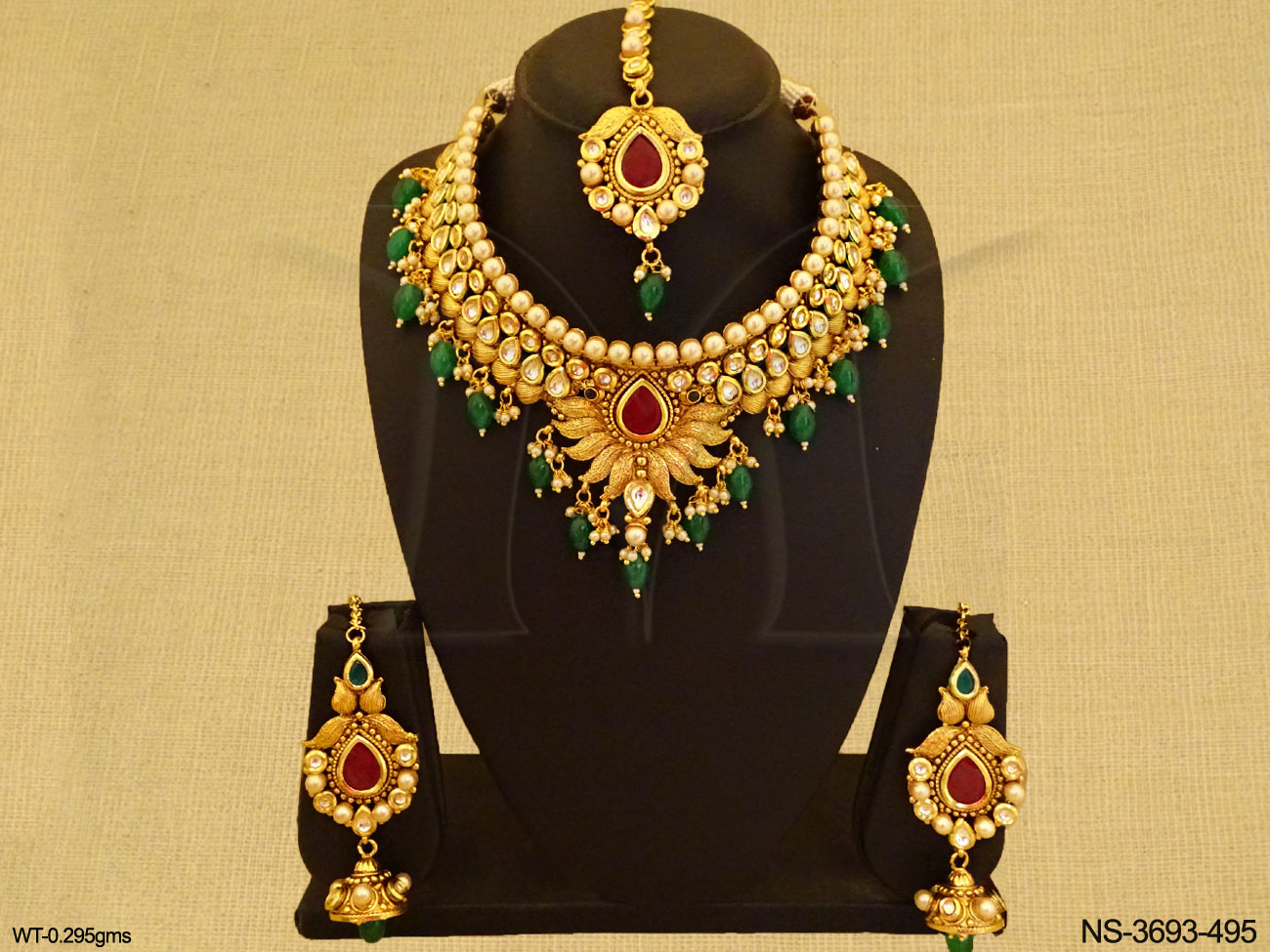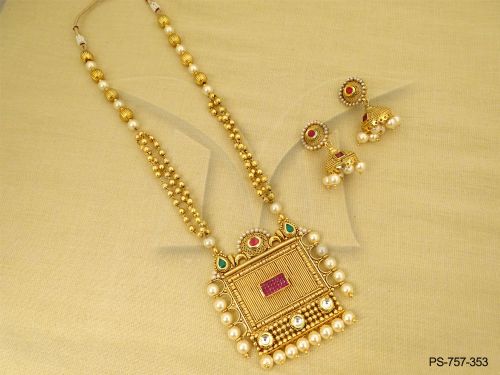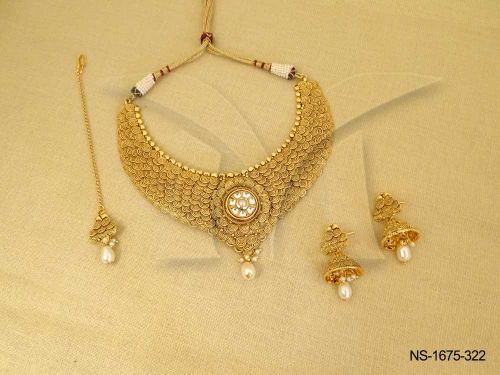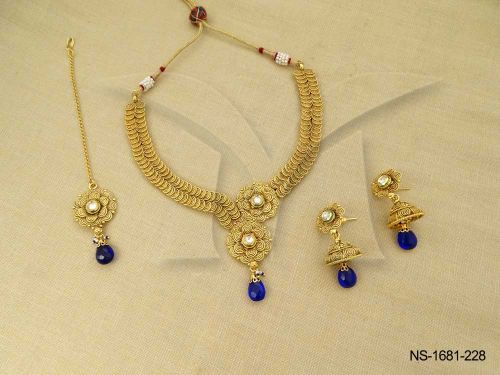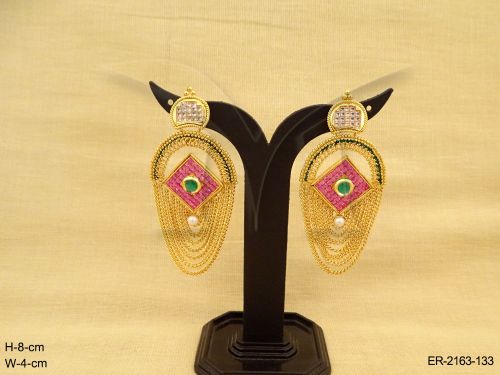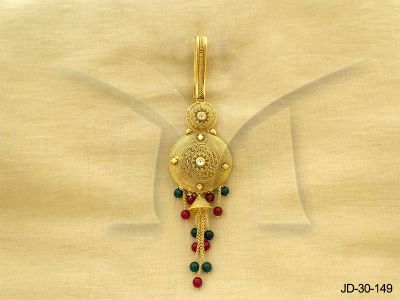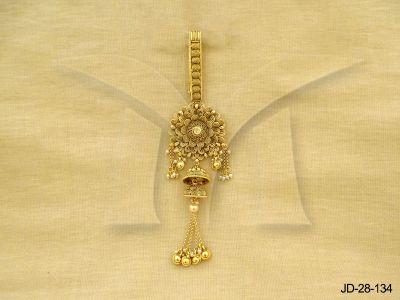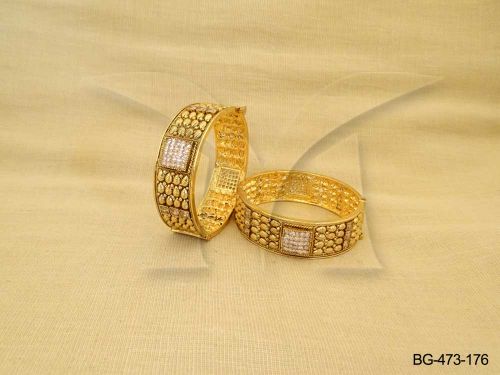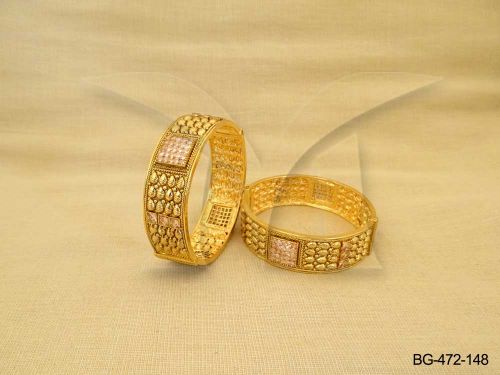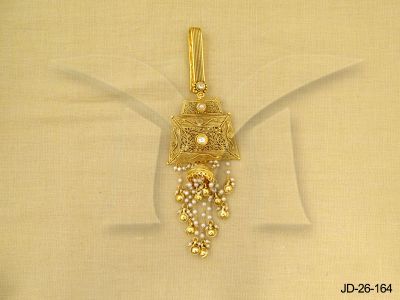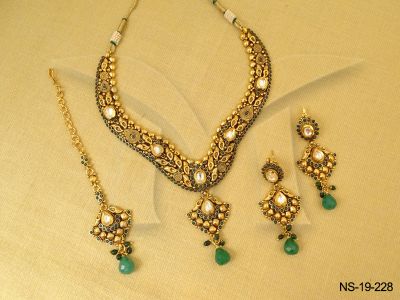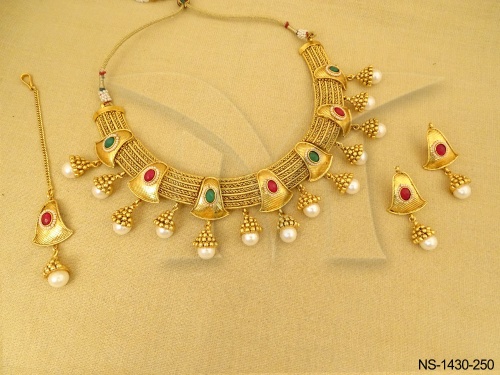Antique Broad Style Bangles
Bangles Jewellery has been a significant adornment for Indian women since ages. Its significance in an Indian woman’s life can be judged from the number of Jewellery gifts she receives on a variety of auspicious occasions in her life and how even the poorest of women possess some kinds of Jewellery they can afford. Indian women’s decorating themselves with Jewellery is not only a customary tradition, but also has a lot of values attached to each and every Jewellery piece worn by the women.
There were numerous reasons as to why our ancestors wore Jewellery. One of the most important being that the jewels were often used to denote one’s social status. By just a glance at one’s jewels one could guess the area to which the adorner belonged, his profession, marital status and much more. Also, jewels were made for special happenings like coronation ceremonies, solar and lunar eclipses, falling comets, changing seasons and even wars.
In the olden days, precious metals like gold, silver and platinum were very commonly used to craft the jewels to be adorned by the royals. However, the commoners still stuck to copper, alpaca, iron and aluminium. Now-a-days vintage Jewellery is available in a combination of the above metals, to suit the fashion requirements as well as the pocket of the adorner.
Antique Indian Jewellery gels up very well with traditional attires including Saris, Salwaar Kameez, Ghagra Cholis, and Dhoti Kurtas, but it can also be mixed and matched with present-day outfits. Furthermore, antique jewels can also be very well incorporated in everyday fashion. For instance, a simple inexpensive casual Indian suit can be jazzed up with a trendy antique necklace or even a bangle or two.

